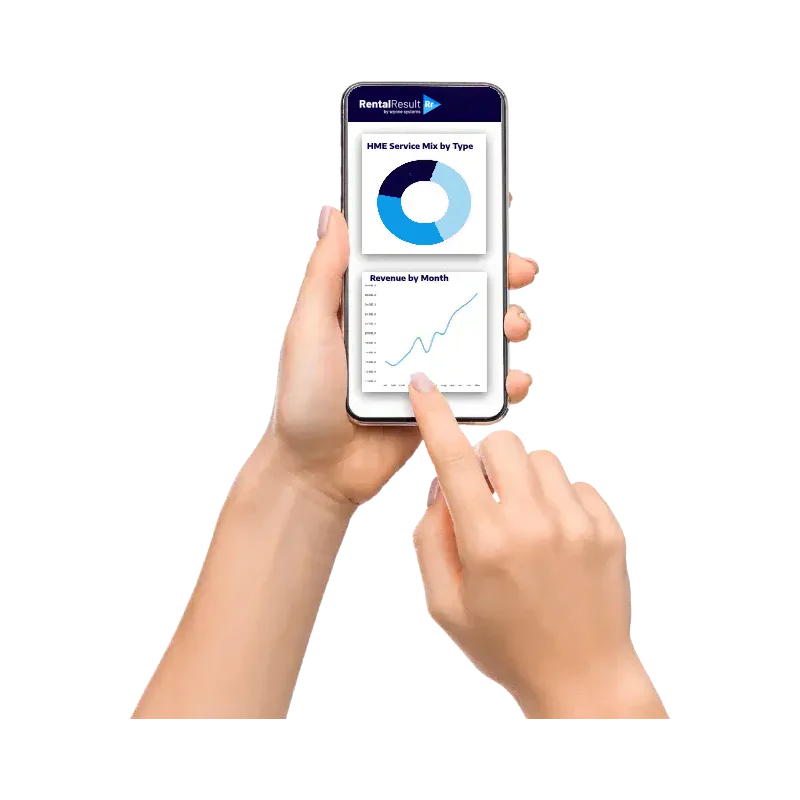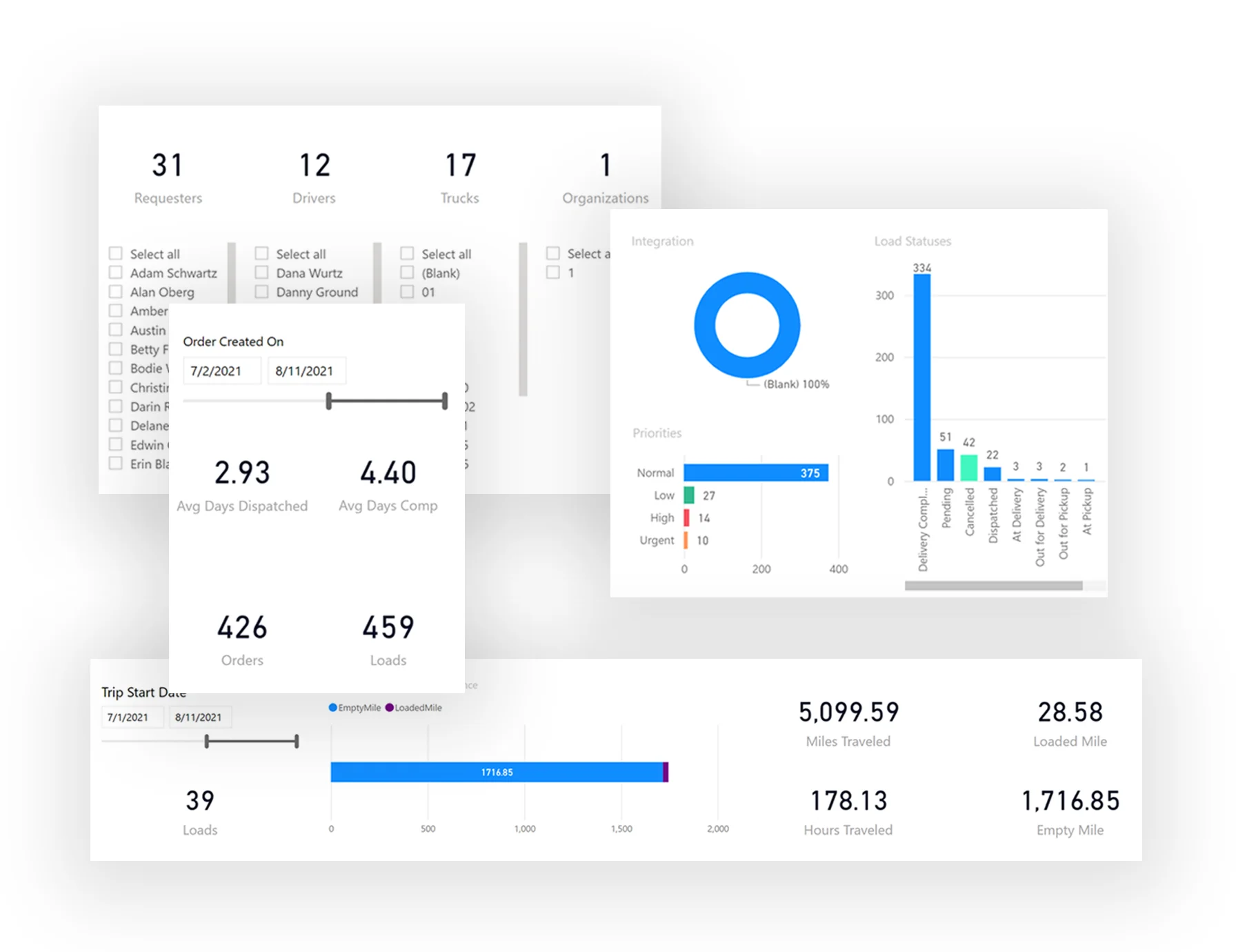
The Growth of Medical Equipment Rentals
The medical equipment rental industry is experiencing rapid expansion, poised to reach $98 billion by 2033, with a projected growth rate of 5.5% annually (Fact.MR). As this sector expands, the role of medical equipment rental software becomes increasingly crucial for efficiently managing large-scale operations.
Healthcare providers frequently utilize rental services to accommodate fluctuating patient volumes, including sudden increases in admissions. During peak demand periods, rental companies play a vital role in delivering essential and life-saving devices to hospitals, ensuring that critical equipment is available precisely when needed.
The Challenges of Medical Equipment Rental
Traditional rental processes are plagued by cumbersome administrative tasks, manual paperwork, and inefficient inventory management. Without real-time visibility into equipment availability, rental businesses face double-bookings, delayed deliveries, and frustrated customers. Manual management of rental requests, reservations, and returns is time-consuming and error prone.
Billing and invoicing are major headaches, often leading to delayed payments and increased administrative workloads, which negatively impact cash flow and overall financial management.
How Medical Equipment Rental Software Helps
Rental software, such as Wynne Systems’, streamlines and automates the management of medical equipment rentals. It enables suppliers and healthcare providers to efficiently handle rentals from purchase order to pick up, ensuring timely deliveries and returns. This software maintains profitability through efficiency-driven savings by optimizing inventory tracking, automating manual processes, managing orders, and scheduling maintenance. Integrating with business-critical systems like ERP’s, CRM’s and accounting systems further enhances operational efficiency and customer satisfaction.
Key Features of Cutting-Edge Rental Software
Advanced rental software for the medical equipment industry includes features such as real-time inventory management, automated billing, and robust CRM capabilities. These features streamline the rental process, enhance customer experience, and drive business growth. Other key features include, but are not limited to:
- Real-Time Inventory Management: Track equipment availability, location, and status in real-time, enabling efficient asset management and timely deliveries.
- Automated Billing and Invoicing: Simplify financial management by generating accurate invoices, tracking payments, and providing detailed financial reports.
- Service & Maintenance Management: Schedule and track maintenance activities to ensure equipment is always in optimal condition, reducing downtime and improving reliability.
- Logistics and Transport Coordination: Manage and optimize the logistics and transportation of equipment, ensuring timely and efficient deliveries.
- Order Tracking and Management: Handle rental requests, reservations, and returns with ease, reducing errors and improving customer satisfaction.
- Customer Portal: Provide clients with an online portal to manage rental requests, view equipment availability, and track orders, enhancing the overall customer experience.
- Mobile Applications: Enable on-the-go management of rental operations through mobile apps, allowing staff to access critical information and perform tasks from anywhere.
- Reporting and Analytics: Generate insightful reports and analytics to make data-driven decisions, optimize operations, and identify opportunities for growth.

Choosing the Right Rental Software
Selecting the right rental software is critical for optimizing your medical equipment rentals. Here are the key factors to consider:
- Assess Business Needs: Identify your specific operational requirements. Consider the size of your inventory, the complexity of your rental operations, and unique challenges within your industry. Tailoring the software to address these pain points ensures it supports your growth objectives effectively.
- Scalability and Flexibility: Ensure the software can grow with your business. As your operations expand, the software should accommodate increased demands seamlessly. Look for solutions that offer modular features or the ability to scale without significant overhauls.
- User-Friendliness: Opt for intuitive software that minimizes the learning curve for your team. A user-friendly interface ensures smooth adoption and efficient use. The software should simplify daily tasks rather than complicate them.
- Integration Capabilities: The software should integrate seamlessly with existing systems such as ERP’s, CRM’s, and logistics platforms. This integration creates a cohesive and efficient ecosystem, enabling data flow across different departments for better decision-making.
- Robust Reporting and Analytics: Advanced reporting and analytics capabilities are crucial. The software should provide detailed insights into various aspects of your operations, from inventory management to financial performance, helping you make data-driven decisions.
- Customer Support: Evaluate the level of customer support offered by the software provider. Reliable support ensures any issues are resolved promptly, minimizing downtime and disruptions to your operations.
- Customization Options: The ability to customize the software to fit your specific workflows and preferences can enhance efficiency and user satisfaction. Look for solutions that allow for configurations that match your business processes.
- Security Features: Ensure the software includes robust security measures to protect sensitive data, such as customer information and financial records. Compliance with industry standards and regulations is also essential.
Key Considerations:
- Identify Operational Requirements:
-
- Size of inventory
- Complexity of operations
- Industry-specific challenges
- Ensure Scalability and Flexibility:
-
- Modular features
- Ability to scale without overhauls
- Online and offline management
- Evaluate User-Friendliness:
-
- Intuitive interface
- Ease of adoption
- Check Integration Capabilities:
-
- Seamless integration with existing systems
- Unified data flow
- Look for Robust Reporting and Analytics:
-
- Detailed operational insights
- Data-driven decision-making
- Assess Customer Support:
-
- Prompt issue resolution
- Minimizing downtime
- Seek Customization Options:
-
- Configurable to business processes
- Enhanced efficiency
- Prioritize Security Features:
-
- Protect sensitive data
- Compliance with regulations
Selecting the right rental software can profoundly impact the efficiency, profitability, and success of your rental operations. By considering these factors, you can choose a solution tailored to your needs, ensuring a smooth and successful implementation.

Implementing Rental Software
Implementing rental software requires careful planning and execution. Assemble a dedicated project team, conduct a thorough assessment of current processes, and customize the solution to fit your needs. Focus on change management, training your team, and providing ongoing support to ensure a smooth transition.
Working with Wynne Systems provides the advantage of a dedicated project manager who ensures the implementation stays on track. The project manager oversees every aspect, addresses issues promptly, and maintains clear communication with all stakeholders. Wynne Systems also offers comprehensive training, equipping your team to use the software effectively. This support reduces downtime, enhances user adoption, and maximizes the software’s impact on your business operations.
The Future of Medical Equipment Rental with Rental Software
The future of the medical equipment rental industry is shaped by advanced rental software. By streamlining operations, enhancing customer experiences, and driving business growth, rental software positions businesses for long-term success. Embrace this transformative technology to stay ahead in this dynamic industry.
Want to learn more about how medical equipment rental software could support your operations? Contact our team of experts to learn more.




